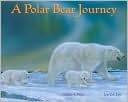The Virtual Bookshelf provides a list of recommended children’s books that reflect the theme of the issue and offers ideas on how to integrate them across the curriculum.
Did you know penguins only live in the Southern Hemisphere while penguin-like Alcids (puffins, razorbills and auklets) are exclusive to the Northern Hemisphere? This is just one of the many facts I learned while compiling this month’s bookshelf. I was shocked to find such a diversity of avian species in the polar regions! I would never have thought to find sandpipers in the tundra or that the same gulls I see on the beach every summer in the Carolinas could survive off the coasts of Canada. Enjoy this month’s selections (Arctic Birds, Antarctic Birds, Migratory Species, and Penguins and Polar Bears) and go… beyond penguins!
ARCTIC BIRDS
Use these books in conjunction with the featured lessons about birds to focus specifically on the birds found in the Arctic.
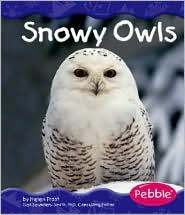 |
Snowy Owls. Helen Frost. 2007. Nonfiction easy reader. Recommended ages: Grades K-1.Simple text and photos give very basic information about snowy owls-where they live and nest and what they eat. Younger students may be able to read independently. Use with Ookpik: The Travels of a Snowy Owl in a lesson such as Animal Study: From Fiction to Facts. |
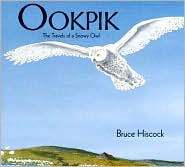 |
Ookpik: The Travels of a Snowy Owl. Bruce Hiscock. 2008. Picture book. Recommended ages: Grades K-4.A pair of snowy owls struggle to raise their chicks during the long days of summer and a lemming shortage. Two chicks survive, and Ookpik is forced to travel further and further south to find food. First he travels from his preferred wide-open tundra to the coniferous taiga, past farms and more populated areas until he finds himself in the Adirondacks hunting rats and mice. Paintings show the bleak landscape and how out-of-place the owl looks sitting on a bale of hay in a New England farm. A page of facts about the owl follows the story. Sure to be a hit with students. Pair with Snowy Owls in a lesson such as Animal Study: From Fiction to Facts. |
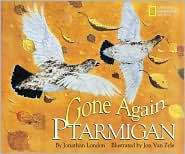 |
Gone Again Ptarmigan. Jonathan London. 2001. Nonfiction picture book. Recommended ages: Grades K-5.A lynx stalks a snowshoe hare… and suddenly ptarmigans burst from the snow, hidden by their white feathers. As spring arrives, so do brown feathers, which keep the ptarmigans disguised as they hide among leaves in the melting snow. This simple story will have students clamoring to find the ptarmigan on each page (there isn’t one on every page) as various arctic predators hunt. Great for classroom discussions about adaptation and camouflage. |
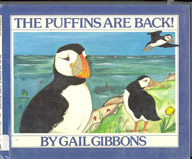 |
The Puffins are Back. Gail Gibbons. 1991. Nonfiction picture book. Recommended ages: Grades 2-4.Scientists arrive right on time to see the puffins gather off the coast of Maine. They are pleased that their efforts to increase the population have been working. Normally gray in color, these auks “dress up” for breeding season. From a special blind, the scientists observe pairs carving out burrows in the ground, and watching chicks take their first flight at night when their predators are asleep. Cartoon-like illustrations show the birds in action. |
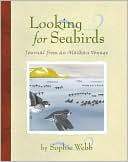 |
Looking for Seabirds: Journal from an Alaskan Voyage. Sophie Webb. 2004. Outstanding Science Trade Book Award 2005. Nonfiction book. Recommended ages: Grades 4-5.Follow researcher Sophie Webb as she boards the research ship Alpha Helix and sails to the Aleutian Islands to study arctic seabirds. It is difficult for biologists to study birds at sea, where the birds spend most of their lives, because of the violent waters and wind. Instead, most of our research comes from their breeding grounds when they are on land. Here, the ship follows plankton populations and kelp beds hoping to capture a more realistic picture of the behavior of auklets, petrels, albatross, fulmars, and murres. Simple watercolor illustrations capture the grandness of the landscape and the beauty of arctic birds. |
ANTARCTIC BIRDS
Although there are other birds that live, nest, or spend time in Antarctica (such as the skua), children’s literature has traditionally focused on penguins. Use these titles in conjunction with the featured penguin lessons.
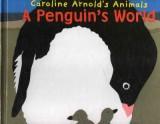 |
A Penguin’s World. Caroline Arnold. 2006. Nonfiction picture book. Recommended ages: Grades K-2.Cut-paper illustrations encourage children to read on and discover more about Adelie penguins. Suitable for student research or for a collage art project. |
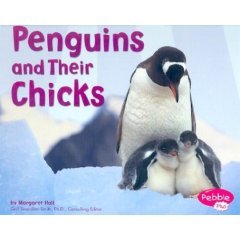 |
Penguins and Their Chicks. Margaret Hall. 2004. Nonfiction book. Recommended ages: Grades K-2.Large, bright photographs and simple text explain basic facts about penguins in general. Different species are shown, but not named. Good for sharing with a large group at the beginning of a unit of study. The section “Watch Penguins Grow” uses full-color photographs to introduce the concept of life cycles and timelines. |
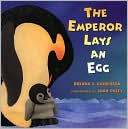 |
The Emperor Lays an Egg. Brenda Z. Guiberson. 2001. Picture book. Recommended ages: Grades K-2.Collage illustrations provide the backdrop to this informational text about the extreme conditions in which emperor penguins live and reproduce. In addition to providing rich content, the book could be used as the springboard for an art activity. |
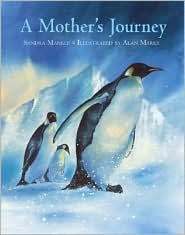 |
A Mother’s Journey. Sandra Markle. 2005. Outstanding Science Trade Book Award 2006. Nonfiction picture book. Recommended ages: Grades K-5.This book about emperor penguins would tie in perfectly with the documentary March of the Penguins. The watercolor and ink illustrations portray the harsh conditions the females must endure as they travel to the ocean to eat, and their journey home through the growing ice sheets. |
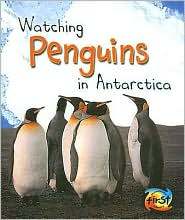 |
Watching Penguins in Antarctica. Louise and Richard Spilsbury. 2006. Nonfiction book. Recommended ages: Grades 2-4.Follow emperor penguins as they gather in rookeries, toboggan over the ice and hunt in the ocean. Color photographs accompany the straightforward text. Boldfaced words and a glossary help students learn about behaviors such as preening. After reading, students could observe the birds in a zoo or a video and watch for examples of the described behaviors. |
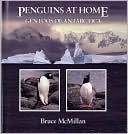 |
Penguins at Home. Bruce McMillan. 1993. Nonfiction book. Recommended ages: Grades 3-5.Learn about the Gentoo Penguins of Antarctica. Vocabulary words and talking points appear in the upper corner of each page, with pictures and text to explain the terms. Find out what a brush-tail is, what rookeries are, and get the low-down on guano. This is an older title, but the only one on gentoos. Teachers could use this layout to spark student ideas for an ABC book about penguins. |
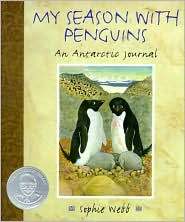 |
My Season With Penguins. Sophie Webb. 2000. Outstanding Science Trade Book Award 2001. Nonfiction journal. Recommended ages: Grades 4-5.Traveling to Antarctica to study penguins takes more than just a plane ride and a camera. Follow biologist Sophie Webb as she chooses cold weather clothing, attends survival school, and sets up a camp at Cape Royds (within view of Mount Erebus). Here she studies the Adelie penguins for two months. She explains methods for tagging, weighing and tracking penguins and shares the research questions her group hopes to answer during their six-year study. This title would complement the real-time Cape Royds nest check activity on the Penguin Science web site. |
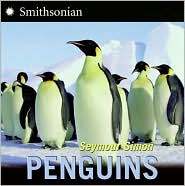 |
Penguins. Seymour Simon. 2007. Nonfiction book. Recommended ages: Grades 3-5.Simon is well known for his informational text for young readers. The first half of the book provides a general overview of penguin characteristics and life cycle, while the second half describes particular species (but not all 17) in more detail. Although the text is dense in places, color photographs provide balance. Perfect for studying informational text or as a springboard for a research project. Teachers of younger students may want to read selected passages aloud, as the entire book may be too long for one sitting. |
MIGRATORY BIRDS
These titles will complement our featured lessons on migration.
 |
Home at Last: A Song of Migration.April Pulley Sayre. 1998. Outstanding Science Trade Book Award 1999. Picture book. Recommended ages: Grades preK-2.Rich pastel-on-black illustrations accompany brief lyrical text describing how a variety of creatures, including a butterfly, a sea turtle, a caribou herd, and an Arctic tern, find their ways home. Pair with science lessons about terns and bird migration. |
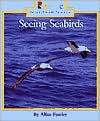 |
Seeing Seabirds. Allan Fowler. 1999. Nonfiction easy reader. Recommended ages: Grades K-1.Part of the easy Rookie Reader series, this book introduces seabirds, many of whom spend at least part of their life in the arctic: Albatross, Gannets, Cormorants, Puffins, Terns and Gulls. Pair with science lessons about terns and bird migration. |
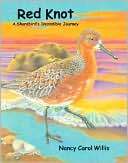 |
Red Knot: A Shorebird’s Incredible Journey. Nancy Carol Willis. 2006. Nonfiction picture book. Recommended ages: Grades 3-5.Who knew you could find sandpipers in the middle of the Canadian tundra? Written in short diary entries, the migration of a red knot sandpiper is traced as it leaves the southernmost point of South America, stops in Delaware Bay, and moves north to the tundra where it will breed and nest for the summer. This text could be paired with this month’s Feature Story, “The Dance of Life.” |
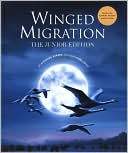 |
Winged Migration: The Junior Edition. Stephane Durand and Guillaume Poyet. 2001. Nonfiction book with CD. Recommended ages: Grades 4-5+.This oversized book shows migration maps for a variety of birds around the world, but includes birds that spend at least part of their life in arctic and subarctic regions. Photographs of Puffins, Arctic Terns, King Penguins, Snow Geese, Mallard Ducks, Great Albatrosses, Gannets, Whooper Swans, Bald Eagles and Barnacle Geese are featured. My favorite featured bird is the arctic tern-a true migratory bird. The birds breed near the North Pole and then travel to the South Pole to fish and winter-over. The text is rather lengthy and lends itself mostly to teachers and upper grades, but younger students will appreciate the maps, photos and sidebars with a few interesting facts. The included CD of bird calls is icing on the cake. Pair with science lessons about terns and bird migration. |
PENGUINS AND POLAR BEARS
This article was written by Kate Hastings. For more information, see the Contributors page. Email Kimberly Lightle, Principal Investigator, with any questions about the content of this site.
Copyright February 2009 – The Ohio State University. This material is based upon work supported by the National Science Foundation under Grant No. 0733024. Any opinions, findings, and conclusions or recommendations expressed in this material are those of the author(s) and do not necessarily reflect the views of the National Science Foundation. This work is licensed under an Attribution-ShareAlike 3.0 Unported Creative Commons license.

